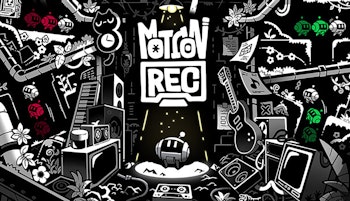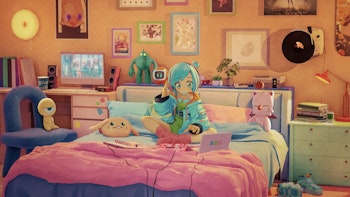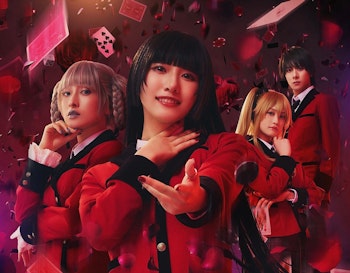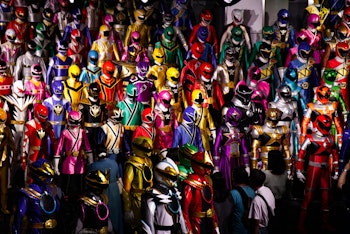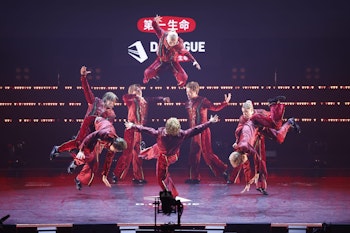
In a neighborhood full of high rises, high fashion brands, and high prices in the heart of Ginza, the Marunouchi TOEI theater looks positively gaunt. It’s a relic of a bygone era in more ways than one, and this two-screen cinema certainly isn’t fooling anyone that the 65-year-old building is as preppy and modern as the multi-story Uniqlo next door, or as flashy as the multiplex TOHO Hibiya cinema just down the road with its state-of-the-art IMAX projection technology. Foreign audiences and tourists likely don’t know it exists, and even locals aren’t flocking through its doors in the way they once did. Still, news of its planned closure brought with it obituaries from across the Japanese film industry, as the book closes on a symbol of cinematic yesteryear.
As the name suggests, the Marunouchi TOEI is notable for being owned and operated by the film studio of the same name. The movie industry was a very different beast when the cinema opened its doors to a booming Tokyo population in September 1960: multiplexes weren’t a thing, and Japanese films were the toast of the Japanese entertainment industry while directors like Yasujiro Ozu were even earning plaudits on the global circuit. Toei was one of many film studios who benefited massively from the 1950s golden age for the industry, producing Japan’s first feature-length animated film in 1958 with The White Snake Enchantress alongside classics like 47 Ronin to huge commercial and critical acclaim.
The opening of this cinema was a natural next step for the company. Most of the major studios had their own cinemas for showing their films, so creating a home for the optimal experience to enjoy Toei films seemed obvious. The company owned the land and had some of their offices in the same building too, so it was even multi-purpose. The 1960s were the beginning of a great realignment, with the industry shook to its foundation by the mass adoption of the TV thanks to the 1964 Olympics and the growth of the multiplex. With better screening technology and more varied programming thanks to operating a larger number of screens in one building, studio cinemas couldn’t compete.
The Marunouchi TOEI is the last of its kind. TOHO continue to operate cinemas, but as a wholly-owned subsidiary chain of multiplexes showcasing films produced by all the studios, rather than a movie palace dedicated solely to the studio's films. Beyond the multiplexes operated by TOHO, Aeon, and others, you have independent cinemas showcasing international, genre and independent cinema. With streaming and better options elsewhere, after all these decades, there’s simply no need for such a cinema to exist in today’s landscape. Built for a different world, and with Toei left with the choice to either tear down the aged structure or build something new, while Ginza already boasts plentiful theaters, arthouse cinemas, and the TOHO on the corner of every block, the decision was obvious.
Still, it’s hard not to feel sad. This is a landmark of history in a city increasingly losing these touch points and sites of character building for ever-more soulless commercial property and offices. The news the building won’t even serve as an office for Toei upon its reconstruction, with the company moving elsewhere as the building becomes another retail spot, only compounds this. It’s the right call, but it doesn’t make it any easier.
The company has at least sought to give the cinema an appropriate sendoff. Starting in early May and running until the cinema’s closure, the company has undergone a mammoth nearly-3-month retrospective of the company’s cinematic heritage, showing everything from the samurai films that kickstarted the studio to recent hits, Studio Ghibli classics to modern blockbusters. For a number of these screenings, the company has brought in creative staff and actors to lead talks on the films.
//
— さよなら 丸の内TOEI【公式】 (@m_toei_heikan) July 27, 2025
☆━━━━━━━━━┓
┃ 2025年7月27日(日)┃
┃ 丸の内TOEI 閉館 ┃
┗━━━━━━━━━┛
本日2025年7月27日(日)丸の内TOEIが閉館いたしました。
銀座の街で65年間ありがとうございました。
丸の内TOEI①最終上映『#動乱』には#吉永小百合… pic.twitter.com/7vaG3WHbt0
These have been frank and open conversations about the cinema, the studio, the films, and served as fascinating windows into the creative process in their own right. For a screening of director Kinji Fukasaku’s seminal final film Battle Royale, lead actor Tatsuya Fujiwara and Kenta Fukasaku, son of the late director, attended to give a special talk looking back on its impact over the past 25 years. From the controversy over the film to its global success and the vehicle it provided to put Fujiwara on the acting map where he has been a towering force ever since across screen and stage, its exactly the film that deserves a place in this rousing sendoff.
Alongside crediting the studio for being the sort of company who would always create films exploring more controversial topics like the yakuza, praising them for taking risks on films with a more anarchic spin like this or recalling how they individually selected and auditioned all 42 student , the two would recall working with Kinji Fukasaku and their time working on the film. Laughing, his son was blunt: “[Because of constant rehearsals delaying filming] we kept going over budget and schedule! Since he was battling cancer in those final days, I would’ve thought he’d want to create a film where he could collaborate with seasoned actors like Bunta Sugawara and Sonny Chiba, but he always wanted to work with younger talents like Fujiwara. That’s just who he was.”
This is just one of many talks to take place across this massive retrospective, a wonderful tribute for the cinema’s last hurrah. This was a building crafted as a temple for Toei’s films, so what better way to say goodbye than to let the creators who brought those works to life share their love for the medium in a place that exudes that warmth? Indeed, just as Fujiwara thanked Toei and this film for being an important page in the story of his youth, Fukasaku recalled one other memory of how this cinema in particular had been so influential in shaping his love for the cinema and the industry.
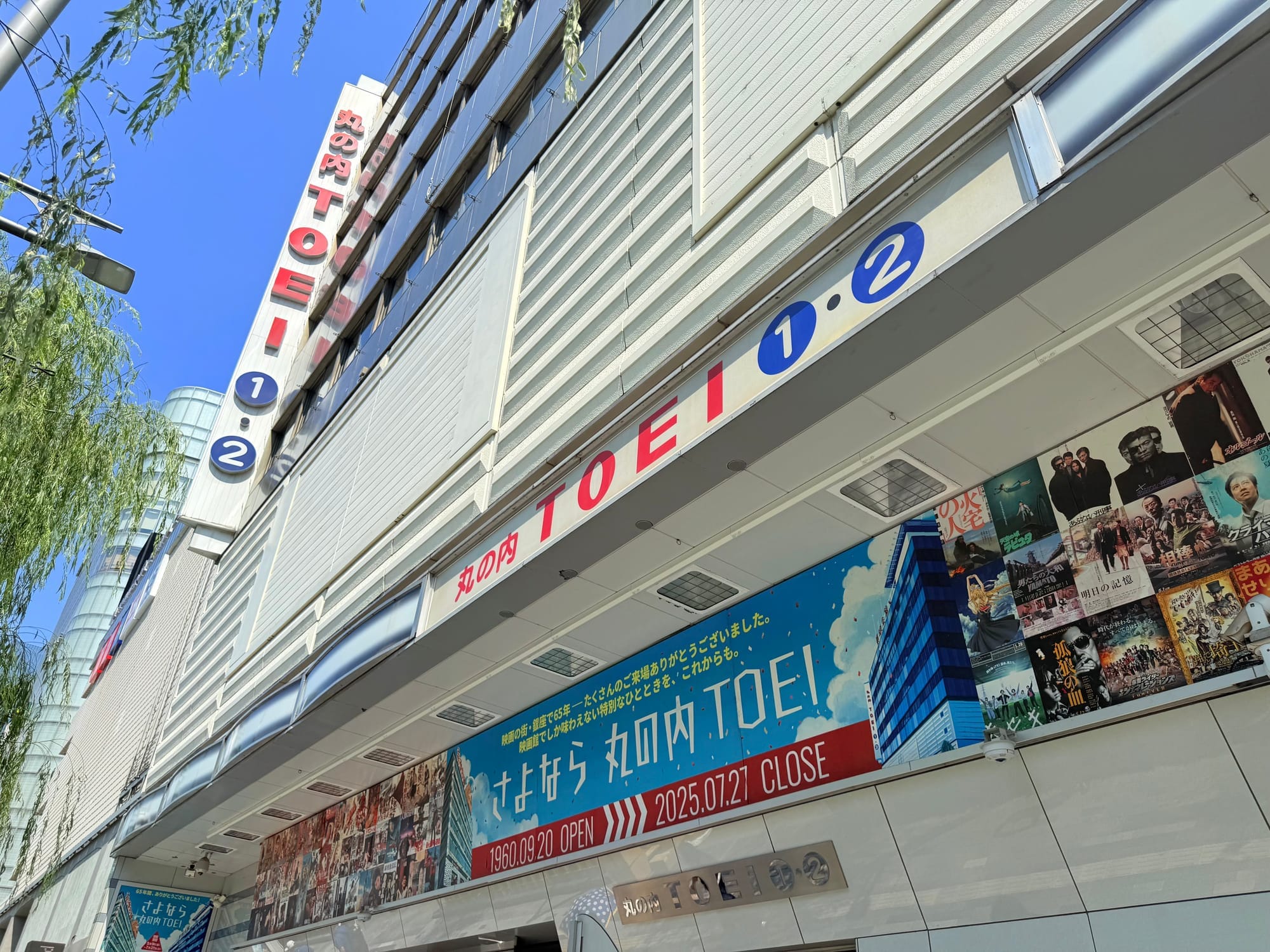
“When I was young, when my father was taking meetings with people at Toei, I’d wait in the theater and watch the Toei Manga Matsuri. That a cinema responsible for such fond memories is disappearing is sad, but I want to etch this moment into my memory and hope to work with Toei again in the future. I imagine my father would also be grateful here today as well.”
A cinema is more than four walls and a screen. From the community of regulars and staff to the formative memories spent watching a movie where the collective joy of enjoying art with a crowd is enough to alter your very worldview, these are buildings with history that embeds itself into the foundations of the very structure itself. And for a cinema this monumental, the last of a bygone era of the movie industry, those memories run very, very deep, for creatives and audiences alike.
Toei aren’t entirely leaving the theatrical distribution landscape. The company owns T-Joy, a small 23-theater chain of multiplex cinemas that will continue to operate. Particularly post-COVID the importance of entry bonuses and premium viewing experiences to the theatrical experience has only grown, and the expense of operating such experiences can only be borne by the multiplexes. Spectacle and scale won the day, and that’s not necessarily a bad thing if the industry more broadly remains healthy.
Still, forgive me if I feel the need to mourn what is lost as this historic building closes its doors for the last time.
